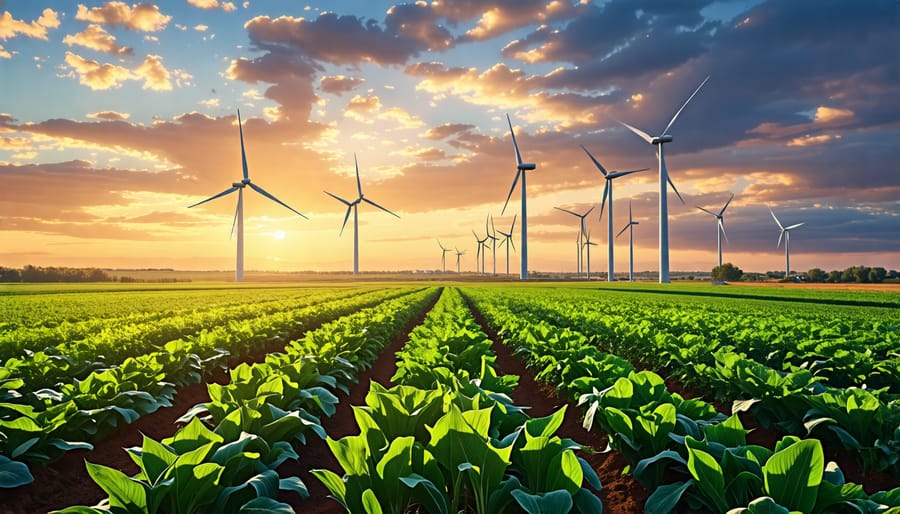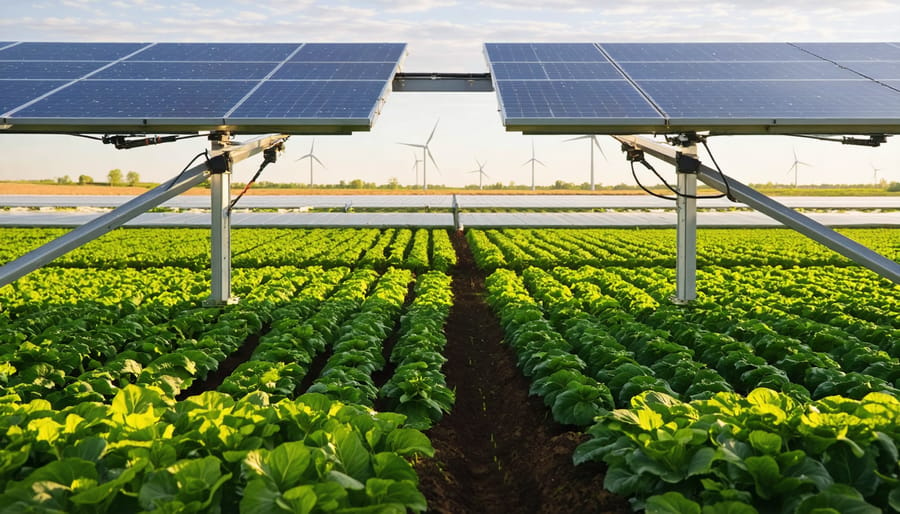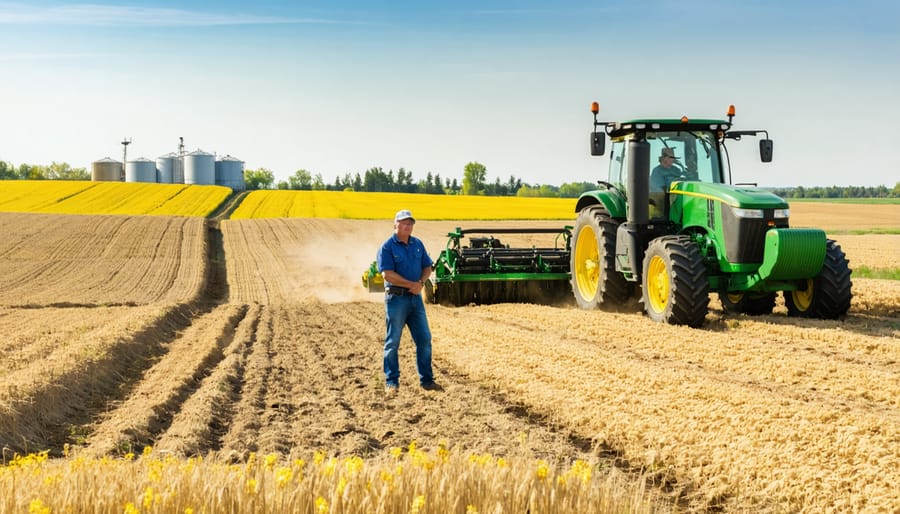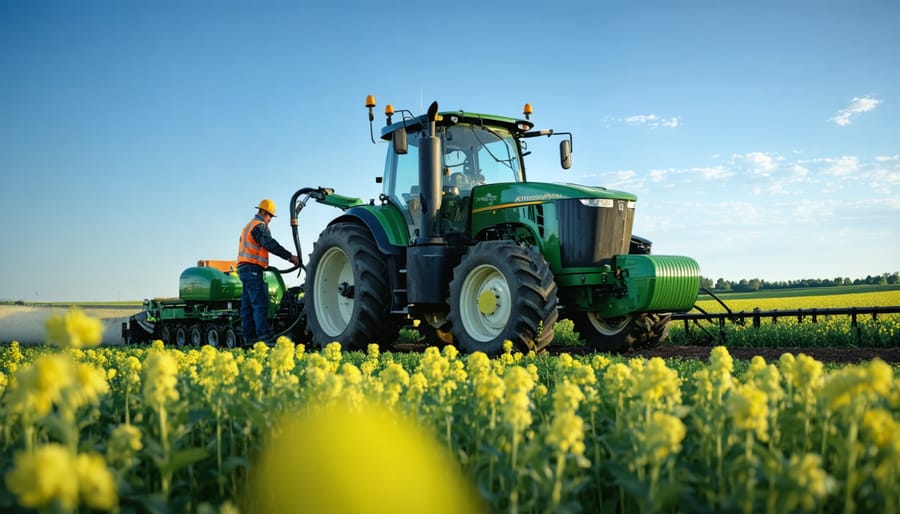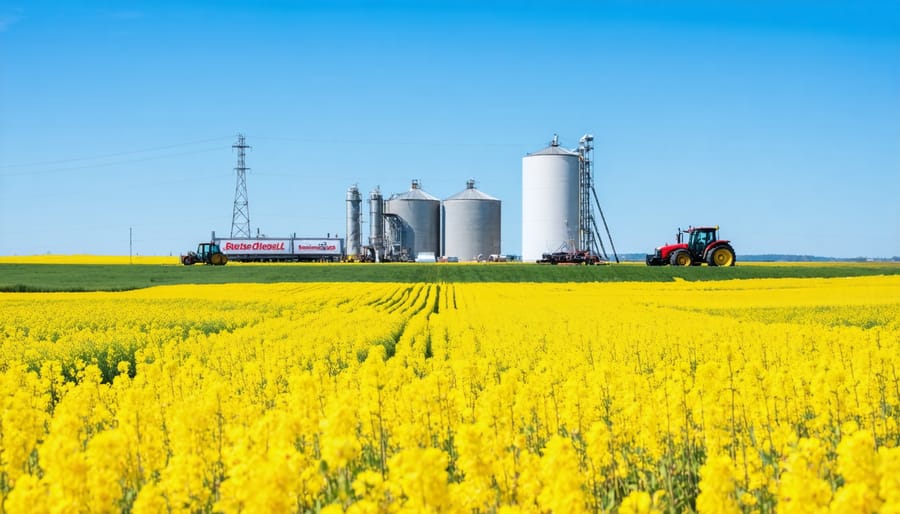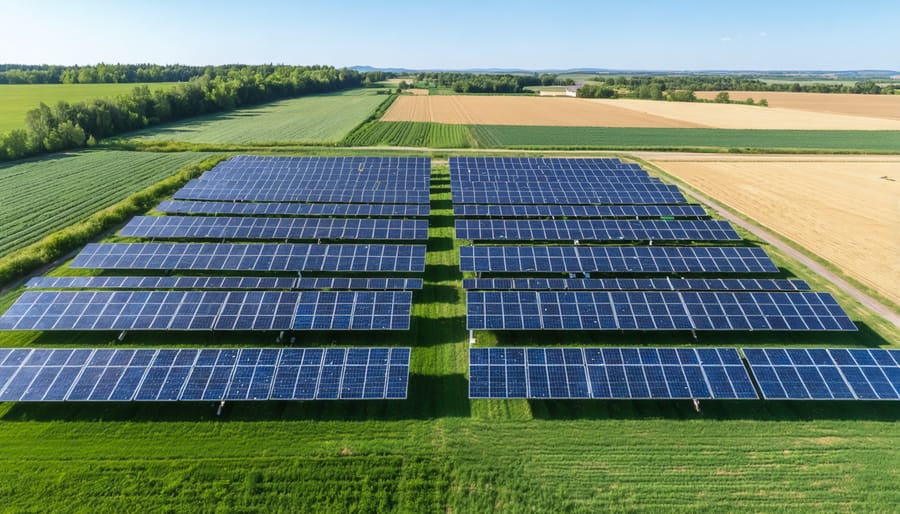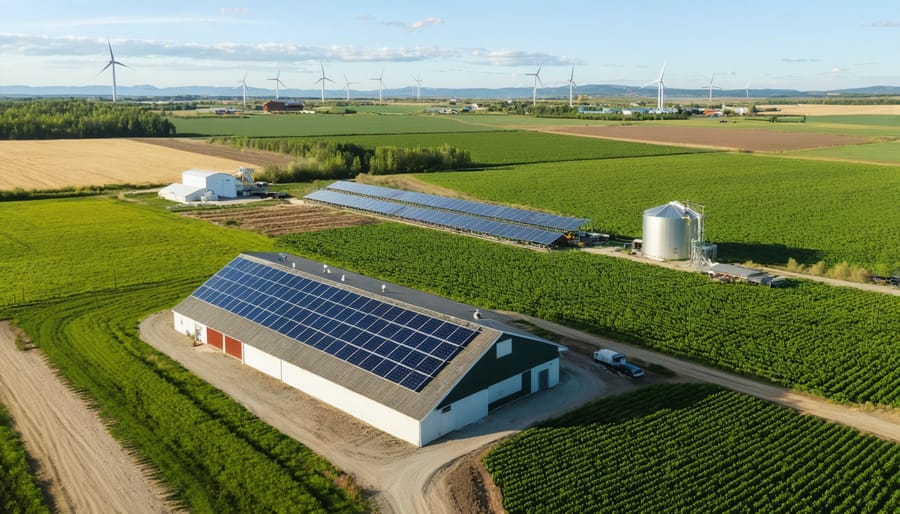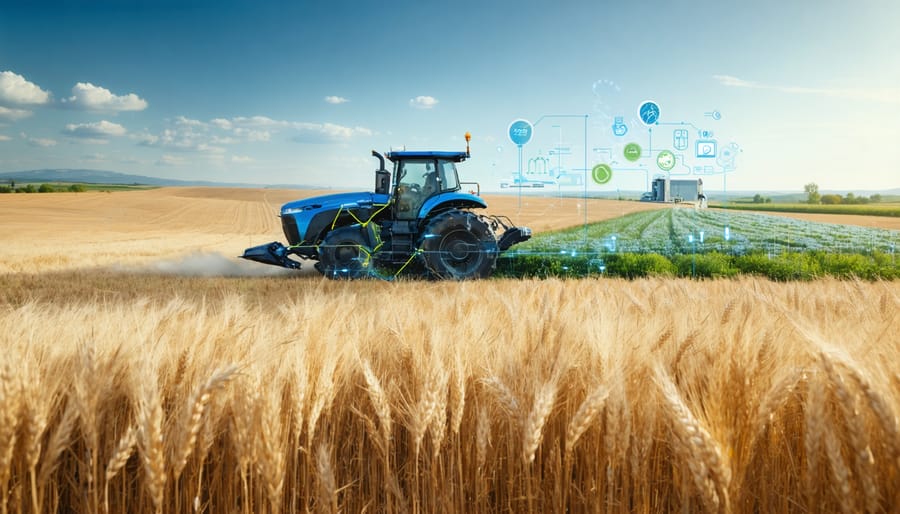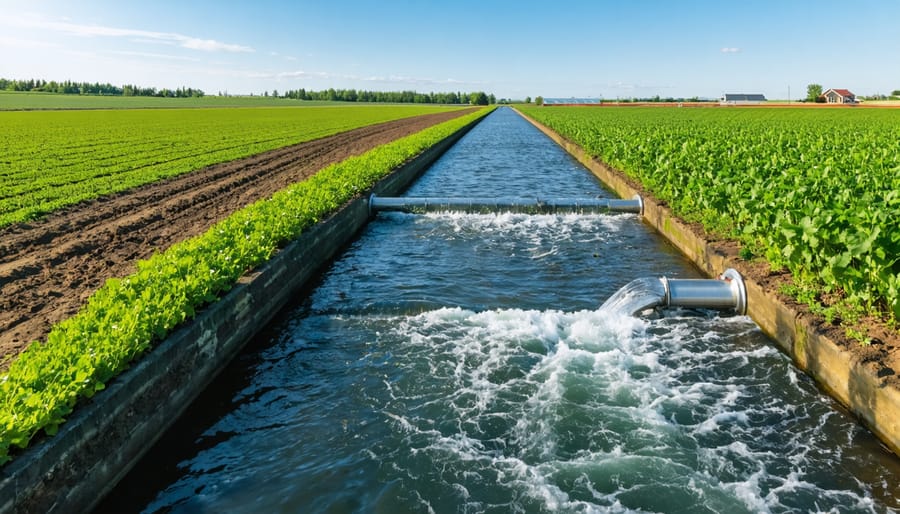Connect your wind farm to the grid by adhering to these essential steps. Collaborate with local utility companies to map out grid access points, ensuring efficient energy transfer. Obtain necessary permits and conduct environmental assessments to adhere to regulations, paving the way for sustainable implementation without disrupting agricultural activities. Invest in advanced grid technology like smart inverters to balance supply and demand, maximizing power generation and minimizing waste. Explore Organic farming benefits to complement renewable energy use, enhancing ecosystem health and farm resilience. Engage with local experts and farmers to share insights and case studies, fostering a community-driven approach to integrating wind energy and sustainable agriculture in Alberta.
The Growing Role of Wind Energy in Agriculture
Why Wind Energy is Vital for Farmers
Wind energy offers significant advantages for farmers, particularly in regions like Alberta. By embracing wind energy, farmers can substantially reduce operational costs. Installing wind turbines on farms allows farmers to produce their own electricity, consequently decreasing their reliance on traditional power sources and lowering energy bills. This cost-saving measure is crucial, as it enables reinvestment into the farm, whether for upgrading equipment or expanding operations.
In addition to financial benefits, wind energy plays a pivotal role in reducing carbon footprints. With climate change being a pressing concern for agriculture, adopting wind energy demonstrates a commitment to sustainable practices, which can also enhance community reputation and consumer trust.
Alberta farmers benefit further from the cooperative nature of wind energy projects. Community-led initiatives often pave the way for engagement with local authorities and experts, making the transition smoother. Farmers can share success stories and strategies, fostering a supportive network focused on sustainable growth. By participating in wind energy initiatives, farmers not only advance their own operations but also contribute to a greener future for the agricultural sector.
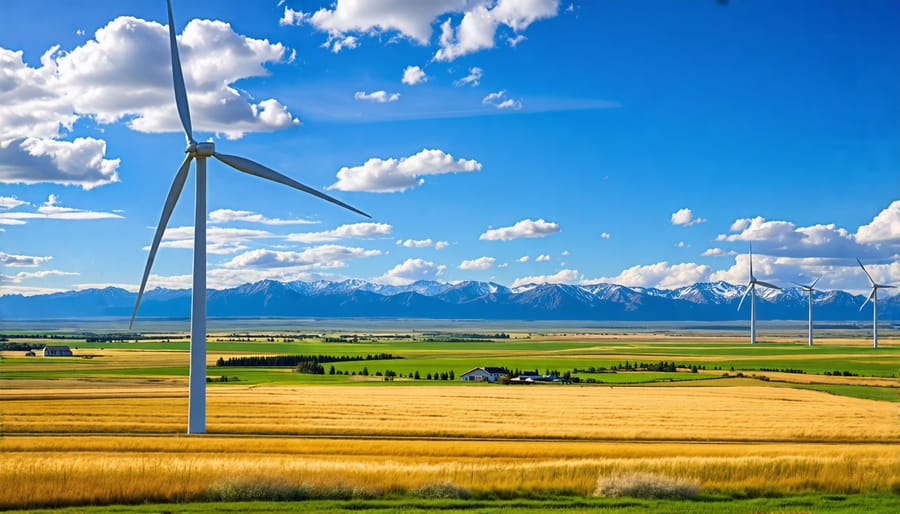
Case Studies from Alberta
Alberta has steadily emerged as a leader in integrating wind energy into its agricultural landscape, setting a prime example for sustainable farming practices. The province is home to numerous farms that have successfully harnessed wind power, contributing not only to energy efficiency but also to environmental stewardship in the region.
In southern Alberta, several farms have integrated wind turbines to power operations, ranging from grain drying to irrigation systems. This adoption has notably reduced operational costs and minimized the carbon footprint. By connecting these wind farms to the grid, Alberta farmers have created a consistent energy supply that bolsters the reliability of their agricultural activities year-round.
Recently, a prominent farm in the foothills region implemented a hybrid approach by combining wind energy with agrivoltaics. This innovative method maximizes land use by co-developing crops and energy systems, offering dual benefits to the landowners. Such inspiring implementations underscore the potential of wind energy in agriculture, highlighting not just economic gains, but also progress towards a sustainable future for Canadian farming communities.
How Wind Farms Connect to the Grid
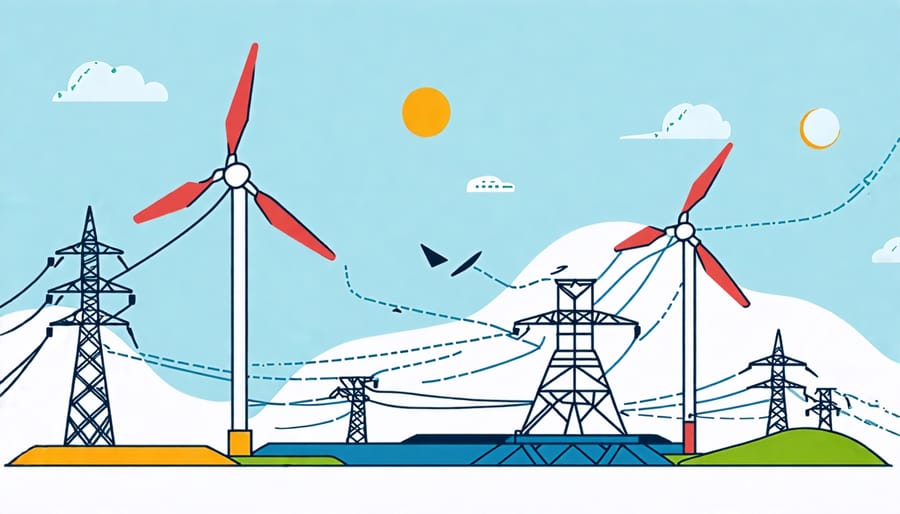
Understanding Grid Connectivity
Connecting wind farms to the power grid involves a series of essential steps to ensure that the energy generated is effectively and efficiently delivered to where it’s needed. For farmers in Alberta and elsewhere in Canada, understanding this process not only opens the door to sustainable energy but also provides opportunities for economic growth within rural communities.
The journey begins with the wind turbines generating electricity as wind turns the blades, which is then converted from mechanical to electrical energy. This generated electricity is initially at a variable and often lower voltage, which needs upgrading to match the grid’s standards. This is done through transformers that step up the voltage to a level suitable for transmission over long distances.
From the turbines, electricity moves through a network of cables to a local substation. At this point, the energy is synchronized with the grid—ensuring compatibility in terms of frequency, voltage, and phase. After synchronization, the electricity is fed into the national grid, flowing seamlessly alongside energy from other sources.
Beyond the technical steps, the integration of wind energy into the grid offers numerous benefits. Not only does it reduce reliance on fossil fuels, but it also empowers communities with cleaner, renewable power sources. By understanding this process, Canadian farmers can play an active role in the transition to a more sustainable agricultural sector, contributing to both economic and environmental resilience.
Grid Challenges and Solutions
Integrating wind farms into the power grid presents several challenges, particularly in regions like Alberta where farming and rural communities are prevalent. One common issue is the variability of wind energy; it’s not always consistent, which can lead to fluctuations in energy supply. To address this, energy storage solutions such as batteries and flywheels can be implemented to store excess energy and ensure a steady supply even when the wind isn’t blowing.
Another challenge is the infrastructure itself. Many rural areas might face limitations in existing grid capacity, which can lead to congestion. Upgrading transmission lines and investing in smart grid technologies can help accommodate the increased load from wind farms, ensuring reliable energy distribution. In some Canadian agricultural areas, microgrids are being developed which allow communities to be self-sufficient and better manage their energy resources.
A big concern for farmers is the potential impact on agricultural operations. Collaborating directly with grid operators and conducting thorough impact assessments can minimize disruptions and maximize benefits for farmers. Local case studies in Alberta have shown that with open communication and strategic planning, wind energy projects can significantly enhance sustainability without hindering farming activities.
These solutions, guided by expert insights, highlight a path forward for Canadian farmers, enabling them to contribute to a greener future while maintaining the vitality of their agricultural practices.
Environmental Impact and Sustainability
Reducing Carbon Footprint
Integrating wind farms with the power grid can significantly reduce the carbon footprint of agricultural operations in Alberta. As these farms harness the natural, renewable energy of the wind, they provide a sustainable alternative to fossil fuels, helping to cut down on greenhouse gas emissions. This shift is particularly beneficial for Canadian farmers who are increasingly looking to adopt eco-friendly practices and reduce their environmental impact. By utilizing wind energy, farms can operate more efficiently, powering equipment and facilities such as storage silos, irrigation systems, and heating barns with clean energy.
A local case study from the southern Alberta region demonstrates the positive impact: a mid-sized farm successfully reduced its reliance on diesel generators by 30% after connecting to a nearby wind farm. Interviews with agricultural experts reveal that these changes not only support the environment but also offer long-term cost savings for farmers. Embracing this green energy source empowers the community, making agriculture in Alberta more sustainable and resilient.

Improving Soil Health
Wind energy not only promises cleaner power but also fosters healthier farming practices by indirectly improving soil health. As more wind farms connect to the grid, particularly in Alberta, an added environmental benefit has emerged—reduced dependence on traditional energy sources that can be harmful to soils. This shift allows farmers to adopt organic and regenerative farming techniques with greater ease. By reducing carbon emissions and minimizing pollutants, wind energy enhances the quality of soil by maintaining balanced ecosystems.
In practical terms, wind farms contribute to soil conservation by supporting practices like cover cropping and reduced tillage, which enhance soil structure and fertility. The economic savings from using wind energy can be redirected towards sustainable practices, encouraging farmers to invest in eco-friendly advancements. Local case studies highlight these benefits, showing increased crop yields and more resilient farm ecosystems.
By embracing wind energy, Canadian farmers can play a pivotal role in promoting long-term soil vitality, creating a win-win scenario for the environment and their livelihoods. Seeing results from windy Alberta, farmers are motivated to harness these innovations, paving the way for future-friendly farming practices.
Expert Insights and Interviews
Interviews with Canadian Agricultural Experts
In a rapidly evolving agricultural landscape, Canadian experts highlight the innovative role of wind energy as a sustainable solution. Talking to industry professionals like Emily Wong, an Alberta-based agricultural economist, unveils insights into how wind farms can enhance rural productivity and independence. Wong emphasizes, “Integrating wind energy on farms not only reduces operational costs but also aligns with eco-friendly goals, crucial for future food security.” Another prominent voice, James Atherton, an agronomist in the province, shares case studies where farms successfully connected to wind farms, leading to considerable savings and reduced carbon footprints. “Farmers in Alberta are harnessing the power of the wind, turning it into a reliable partner in crop production,” Atherton explains. These shifts are supported by technological advancements and governmental incentives encouraging green energy. As wind energy technology continues to evolve, its potential benefits to agriculture highlight a promising path towards sustainability and resilience in Canadian farming communities.
Community Perspectives
“Living near a wind farm has brought unexpected benefits to our community,” shares Tim Carson, a farmer from Alberta, who has embraced the presence of these energy installations. “Besides generating clean energy, the connection to the grid has stabilized electricity prices, which is a big advantage for our energy-intensive operations.”
Fellow farmer, Emily Hayes, adds a perspective that resonates with many in the region: “The reliability of power has improved, and the community has become more cohesive as we are part of a global movement towards sustainable farming. We see these turbines as beacons of progress.”
These sentiments are echoed by community leader, Raj Singh, who highlights how the collaboration between wind farms and local governments fosters essential infrastructure improvements. “With this partnership, we’ve seen better roads and enhanced technology, which benefits everyone, especially the agriculture sector.”
Such firsthand experiences emphasize not only the technical but also the social strides facilitated by wind farm integration, proving that renewable energy can coalesce with rural life in a mutually beneficial manner.
Conclusion
In conclusion, wind energy represents a promising avenue for sustainable agricultural practices in Alberta, offering both environmental and economic benefits to local farmers. By harnessing this renewable resource, Alberta’s agricultural sector can significantly reduce its carbon footprint while also achieving energy independence. The integration of wind farms into the local grid not only provides a cleaner energy source but also enhances the resilience of rural communities against fluctuating energy prices.
Case studies from Alberta illustrate the practical impacts: farmers have successfully used wind energy to power their operations, reducing costs and increasing profitability. Expert insights affirm that transitioning to wind energy is not only feasible but also advantageous, providing an opportunity to lead in sustainable practices. For Alberta’s farming community, embracing wind energy is an investment in a sustainable future, ensuring both environmental conservation and economic viability. As more farmers understand and implement these practices, the potential for positive change continues to grow, reinforcing Alberta’s role as a leader in sustainable agriculture.

